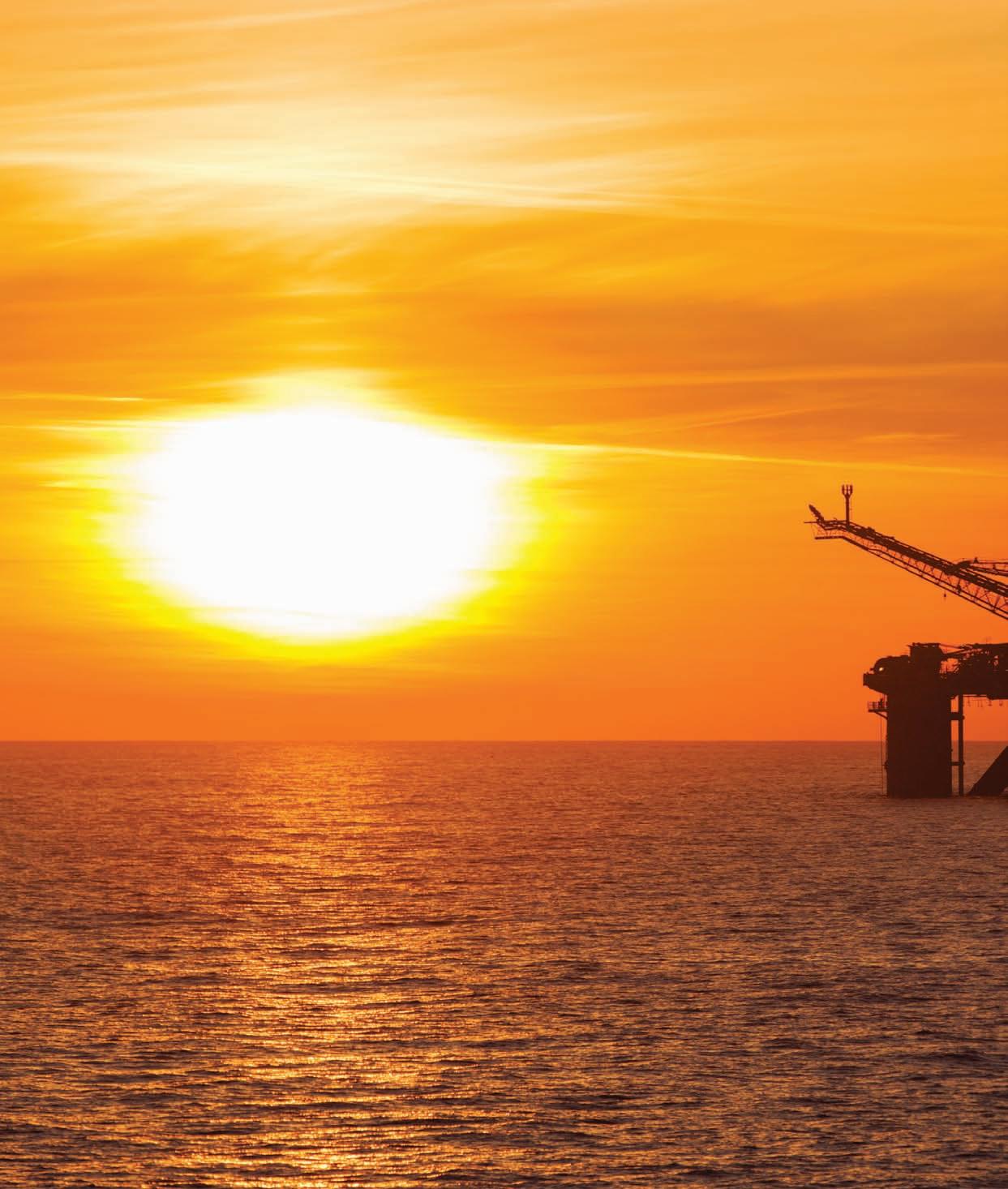WA CAN’T WAIT
Build a decommissioning hub for our environment, jobs and a green energy future.




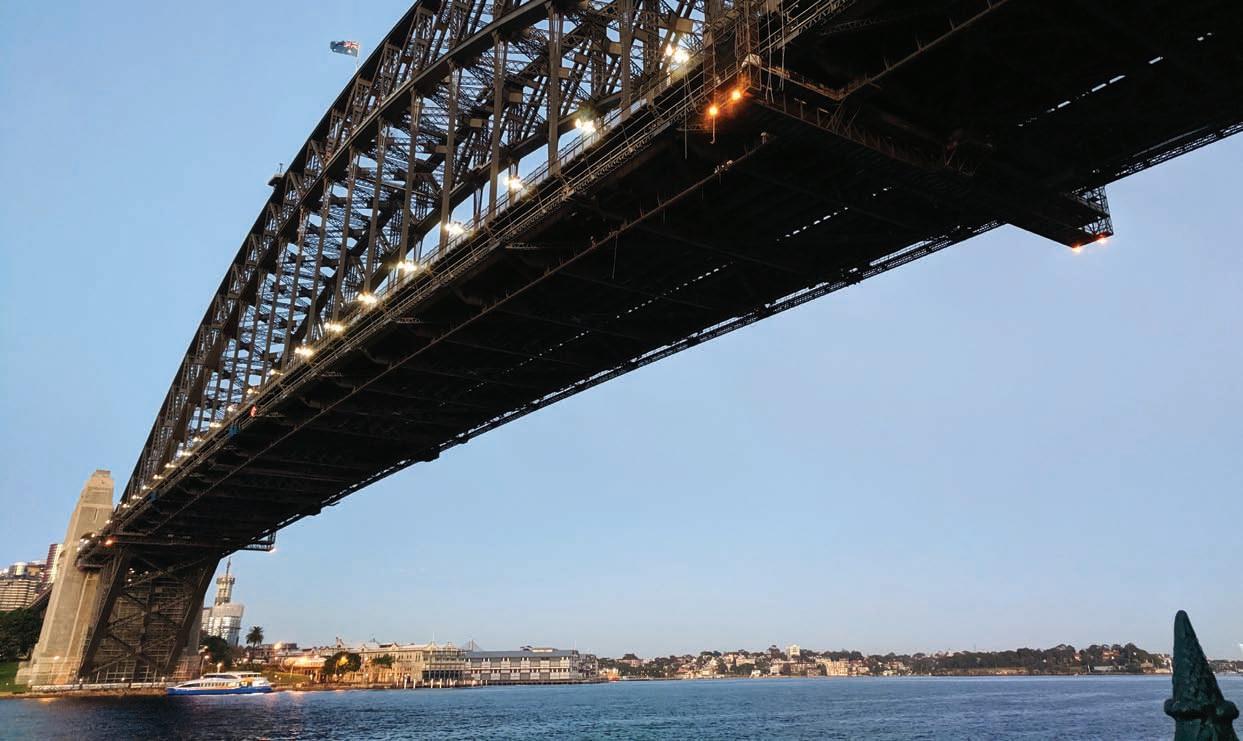

Build a decommissioning hub for our environment, jobs and a green energy future.





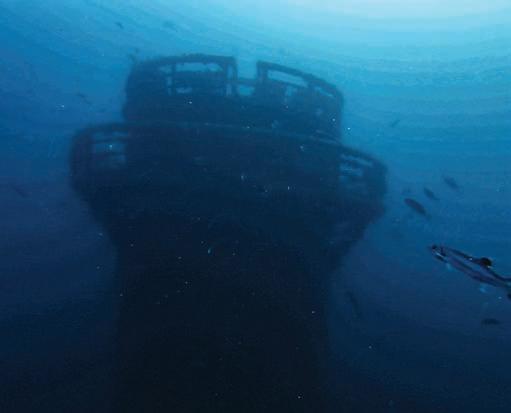
This isn’t just a clean-up, it’s a once-in-a-generation opportunity to build a world-leading industry. Australia must decommission and recycle 5.7 million tonnes of oil and gas infrastructure and Western Australia is ground zero, with 89% sitting off its coast.
By establishing a large-scale decommissioning hub in WA, we can:
l Create thousands of secure jobs
l Protect oceans and communities
l Recover valuable materials for a circular economy
l Lead the transition to a clean energy future
Australia can’t wait. WA must lead the way. Build a large-scale decommissioning hub for our environment, for jobs, and for a green energy future.

Australia can’t wait. WA must lead the way.
Build a large-scale decommissioning hub for our environment, for jobs, and for a green energy future.
Australia stands at a crossroads, one that carries significant environmental risk and a once-in-ageneration opportunity for Western Australia’s economy, workforce and ecosystems. At the centre is the urgent and mammoth task of offshore oil and gas decommissioning.
According to the Centre of Decommissioning Australia (CODA), 5.7 million tonnes of material must be removed from offshore oil and gas infrastructure, equivalent to 110 Sydney Harbour Bridges1. Of this, 89% lies off the coast of WA, making the state ground zero for what may be the largest industrial and environmental clean-up in Australian history.
Nationwide, this infrastructure includes:
l 1,008 wells
l 57 fixed seabed facilities
l 11 floating production, storage, and offloading vessels
l 4960 km of pipelines, 1,700 km of flowlines, and 1,500 km of static umbilicals
l 535 subsea structures and 120 risers
Most of it is made from high-value materials, 60% steel and 25% concrete, that can be recovered and recycled. Pipelines alone represent 67% of the total, much of it nearing end-of-life.
Without strong regulation and targeted investment, Australia faces two urgent risks: environmental damage, as ageing infrastructure corrodes and pollutes marine ecosystems; and lost economic opportunity, as other regions move fast to lead the global decommissioning market. While Australian law requires full decommissioning, enforcement is patchy. Some operators delay or avoid their responsibilities by proposing greenwashing solutions such as artificial reefs or abandoning infrastructure at sea. But this only heightens the danger of well leaks, pipeline ruptures, and the release of oil, heavy metals, plastics and radioactive materials into marine environments, including WA’s globally significant northwest coast. The financial risk is also real. As the Northern Endeavour case showed, when companies walk away, it’s the public that ends up paying the price2
Decommissioning is not just a clean-up, it’s an opportunity to build a strategic new industry. As offshore infrastructure nears retirement, WA can turn this growing liability into an economic asset and environmental legacy. Globally, the decommissioning market is projected to exceed USD $100 billion by 20303, and with decisive action, WA can become a regional leader, driving investment, creating thousands of secure jobs, and laying the foundations for a clean energy future.
With a large-scale decommissioning hub in WA, we can create thousands of secure jobs, support local supply chains, recover valuable materials for a circular economy and industries like green steel, and lay the groundwork for clean energy pathways to offshore wind and renewables.
This is one of the most significant industrial and environmental tasks of our time, and also one of the most promising. The decommissioning timeline extends to 2060 and beyond, but the most urgent phase in Australia is now4 as 50% of infrastructure
must be decommissioned before 2030, and nearly 75% by 2040. WA has the industrial capacity, geographic advantage, and skilled workforce to lead, but it needs clear policy, strong regulation, and strategic investment to get there. To seize this opportunity, the government must act decisively.
l Build a WA decommissioning hub
l Enforce and strengthen existing laws and regulations to ensure full and timely decommissioning
l Ensure decommissioning processes prioritise the safety of workers and the environment
l Invest in ports, recycling facilities, and a local workforce designed to support both decommissioning and emerging offshore wind and renewable energy industries
l Hold operators financially responsible and mandate full industry-funded clean-up
l Introduce strict environmental monitoring
l Work together with unions, First Nations, and communities to deliver a just, inclusive transition
l Link recycling to national green steel plans to position WA as a global clean energy leader.
Decommissioning is not optional, it’s essential. Australia urgently needs a large-scale decommissioning hub and WA is the best placed to lead it. With the right leadership, WA can transform an industrial challenge into a strategic asset and global model.
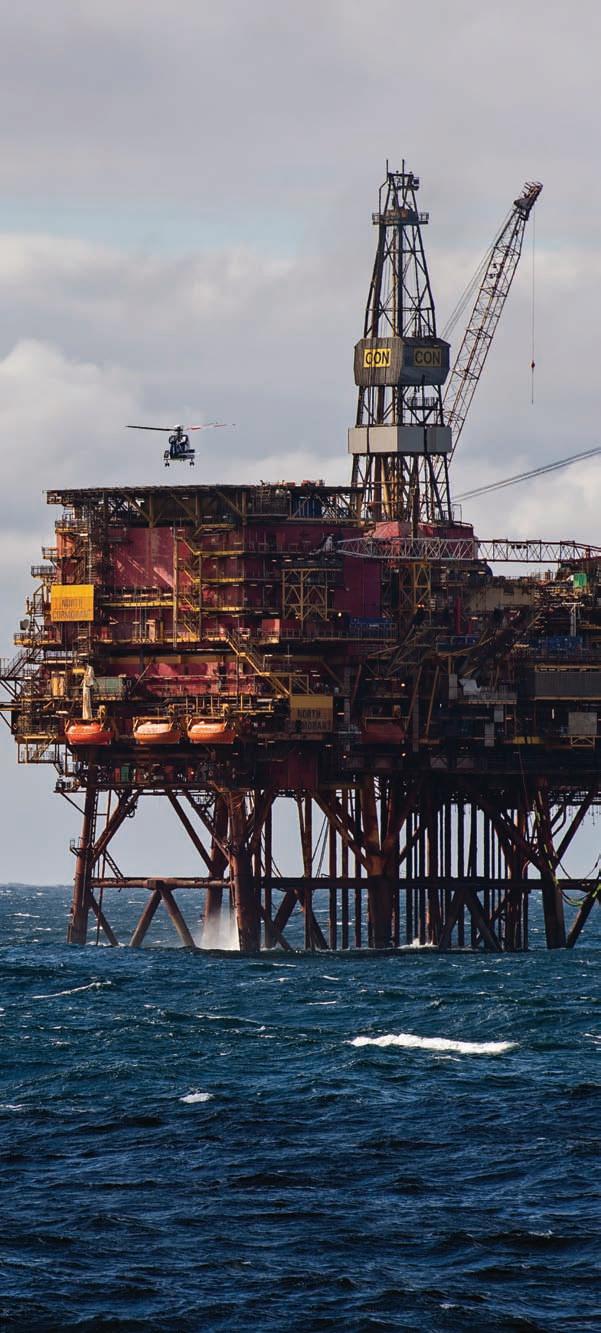
© Marten van Dijl / Greenpeace
Decommissioning offshore oil and gas infrastructure is fast becoming one of Australia’s biggest industrial and environmental challenges. Globally, the cost is expected to reach USD $100 billion by 2030, and Australia holds a significant share of that burden. More than 5.7 million tonnes of ageing offshore infrastructure must be dismantled and recycled, and 89% of it sits off the coast of Western Australia, placing WA at the centre of what could become one of the largest environmental cleanups in history.
Decommissioning is an essential part of the offshore project lifecycle, from approval to end-of-life. It is not a favour to the environment, it’s a legal and moral obligation, and a critical piece of responsible industrial development. But within this challenge lies a strategic opportunity. WA is uniquely positioned to lead the development of a large-scale, world-class decommissioning industry, one that creates jobs, supports circular supply chains, and strengthens our clean energy future. Ageing oil and gas structures are a rich source of scrap steel, a vital resource for green steel production. With growing scrutiny of Australia’s reliance on imported steel, the case for building domestic circular supply chains has never been stronger.
A WA based decommissioning hub would deliver thousands of secure, skilled jobs, a foundation for a just transition for workers and regional economies, and protection of marine ecosystems and coastal communities, particularly along the globally significant northwest coast. The material breakdown underscores this opportunity, around 60% of offshore infrastructure is steel, and 25% concrete. According to the World Steel Association, every tonne of recycled steel avoids 1.5 tonnes of CO2 emissions, and reduces demand for iron ore, coal and limestone. Countries like Norway already recycle up to 98% of steel from decommissioned platforms, a benchmark Australia should strive to meet.
The time to act is now
About 50% of Australia’s decommissioning work must be completed before 2030, and nearly 75% by 2040. This is a massive opportunity, and a rapidly closing window. To seize it, we recommend:
l Build a WA decommissioning hub
l Enforce and strengthen existing laws and regulations to ensure full and timely decommissioning
l Ensure decommissioning processes prioritise the safety of workers and the environment
l Invest in ports, recycling facilities, and a local workforce designed to support both decommissioning and emerging offshore wind and renewable energy industries
l Hold operators financially responsible and mandate full industry-funded clean-up
l Introduce strict environmental monitoring
l Work together with unions, First Nations, and communities to deliver a just, inclusive transition
l Link recycling to national green steel plans to position WA as a global clean energy leader.
Australia lacks a large-scale decommissioning hub and without urgent planning and investment, we risk losing work to offshore competitors, Brunei, for example, will launch a new facility in 20255 . Delays not only risk environmental damage, but also economic losses. Valuable opportunities are already being lost. Santos is decommissioning the Ningaloo Vision FPSO and sending infrastructure offshore for dismantling and recycling6, and the Northern Endeavour is following suit under Australian Government plans7. WA has an opportunity to lead Australia’s decommissioning future, and transform a looming liability into a lasting industrial legacy. Success depends on placing people at the centre. The transition must be just, with workers, unions, and communities as active partners in planning, development, and delivery. If we get this right, we won’t just clean up the past, we’ll help build a cleaner, fairer, more resilient future.
Australia can’t wait. WA must lead the way. Build a large-scale decommissioning hub for our environment, for jobs, and for a green energy future.
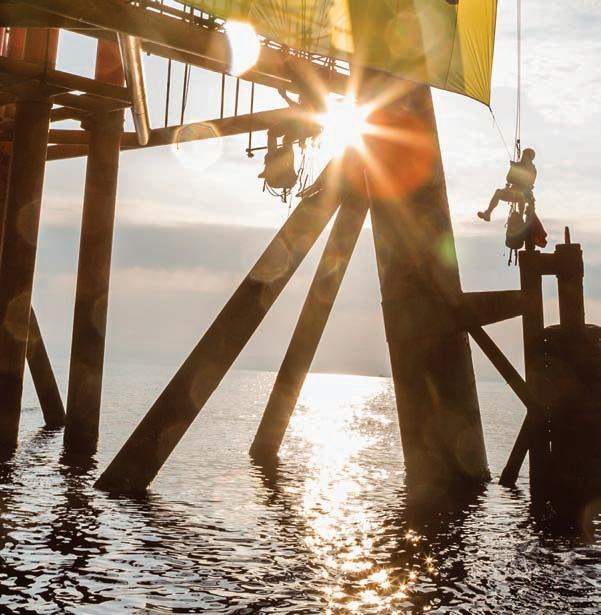
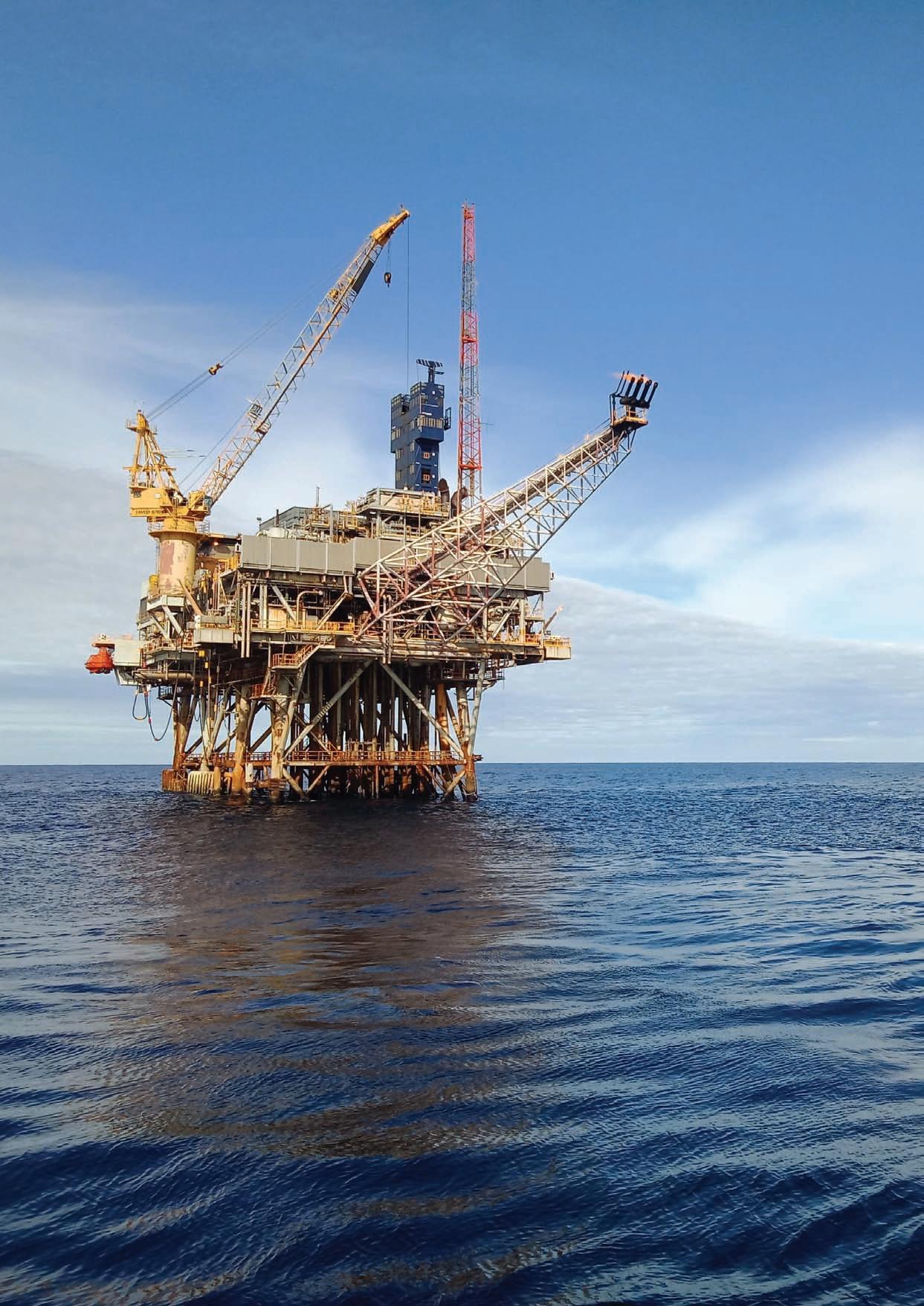
Decommissioning offshore energy infrastructure is a complex but essential process that protects the environment and supports a sustainable future. It involves safely sealing oil and gas wells, removing hundreds of kilometres of pipelines and flowlines from the seabed, and dismantling massive steel platforms, floating facilities, and mooring systems. Once offshore structures are removed, they are transported to ports and specialised dismantling yards, where materials such as steel and plastics are recycled, and waste is sorted, treated, and disposed of. This is no small task. It requires significant investment, careful planning, and skilled execution, along with large specialist vessels, offshore rigs, and an unwavering commitment to safety and environmental care at every step. According to the government’s 2024 Offshore Decommissioning Roadmap8, decommissioning is:
“The timely, safe, and environmentally responsible removal of, or otherwise satisfactory dealing with, offshore infrastructure that was previously used to support oil and gas operations.”
Decommissioning is the mandatory final phase of all offshore oil and gas projects under the Offshore Petroleum and Greenhouse Gas Storage Act 2006
(OPGGS Act). Titleholders are legally responsible for covering the full cost of decommissioning and ensuring safe removal of infrastructure. They must follow a rigorous environmental and safety approvals process, including thorough consultation with impacted communities.
Decommissioning can only commence once the titleholders obtain the necessary environmental approvals from the National Offshore Petroleum Safety and Environmental Management Authority (NOPSEMA) for Commonwealth waters, or from the WA Department of Energy, Mines, Industry Regulation and Safety (DEMIRS) for state-controlled waters. Once infrastructure is brought into coastal waters or onshore, states and territory governments assume most regulatory responsibility.
In practice, decommissioning includes:
l Securely plugging oil and gas wells
l Recovering and removing pipelines and flowlines
l Dismantling steel structures embedded in the seabed
l Removing mooring systems and their anchors
l Transporting recovered infrastructure to dismantling yards for recycling and disposal
l Remediating the sea bed.
Due to its scale and complexity, decommissioning demands a highly skilled workforce, specialist vessels, and an industry-wide commitment to safety and environmental responsibility. Australia is also bound by international law to ensure full and responsible decommissioning of its offshore infrastructure.
According to the WA-based Centre of Decommissioning Australia (CODA), approximately 5.7 million tonnes of offshore oil and gas infrastructure must be removed, equivalent to 110 Sydney Harbour Bridges in weight. Here’s the facts:
l 89% of this infrastructure is located offshore Western Australia
l 9% is located off Victoria
l 60% is steel, most of which is recyclable
l 25% is concrete, used in structures and pipeline coatings
l 67% is related to pipeline infrastructure
l 1,008 wells
l 57 fixed seabed facilities
l 11 floating production, storage, and offloading vessels
l 4,960 km of pipelines
l 1,700 km of flowlines
l 1,500 km of static umbilicals
l 535 subsea structures
l 120 risers
CODA estimates that receiving capacity for dismantling and processing will need to be around 120 kilotonnes per year, or 600 kilotonnes every five years, to keep pace with decommissioning demands. This effort will continue through 2060 and beyond, and is expected to expand further as Australia begins retiring offshore wind infrastructure in coming decades. It’s important to note that current regulations require the full removal of all offshore infrastructure, except mooring lines and anchors. This standard, achieved through pressure from unions and environmental organisations, ensures Australia’s decommissioning efforts meet both environmental and international obligations.
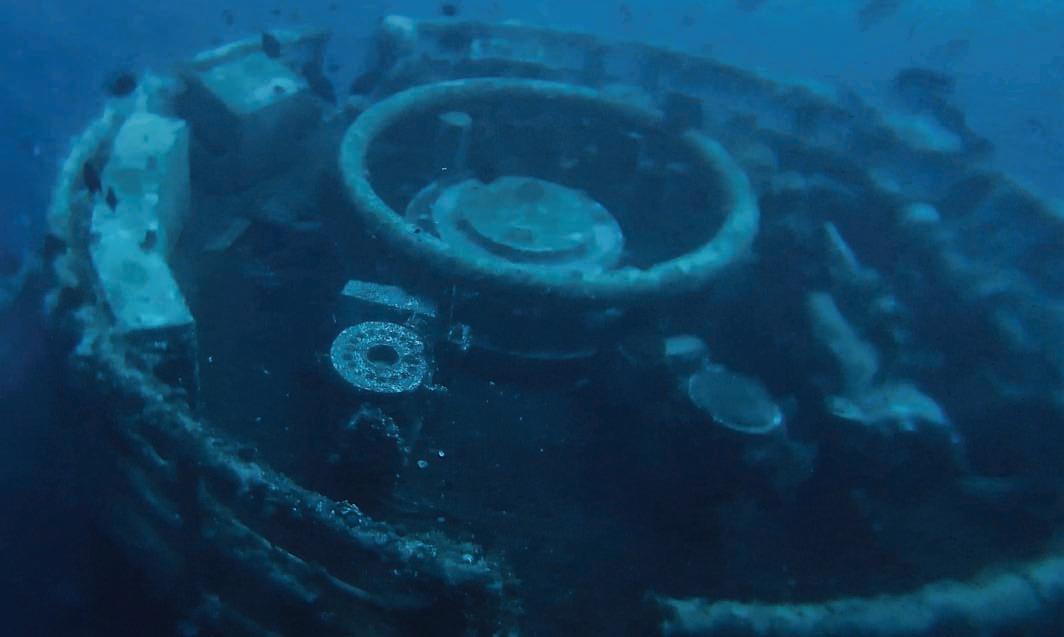
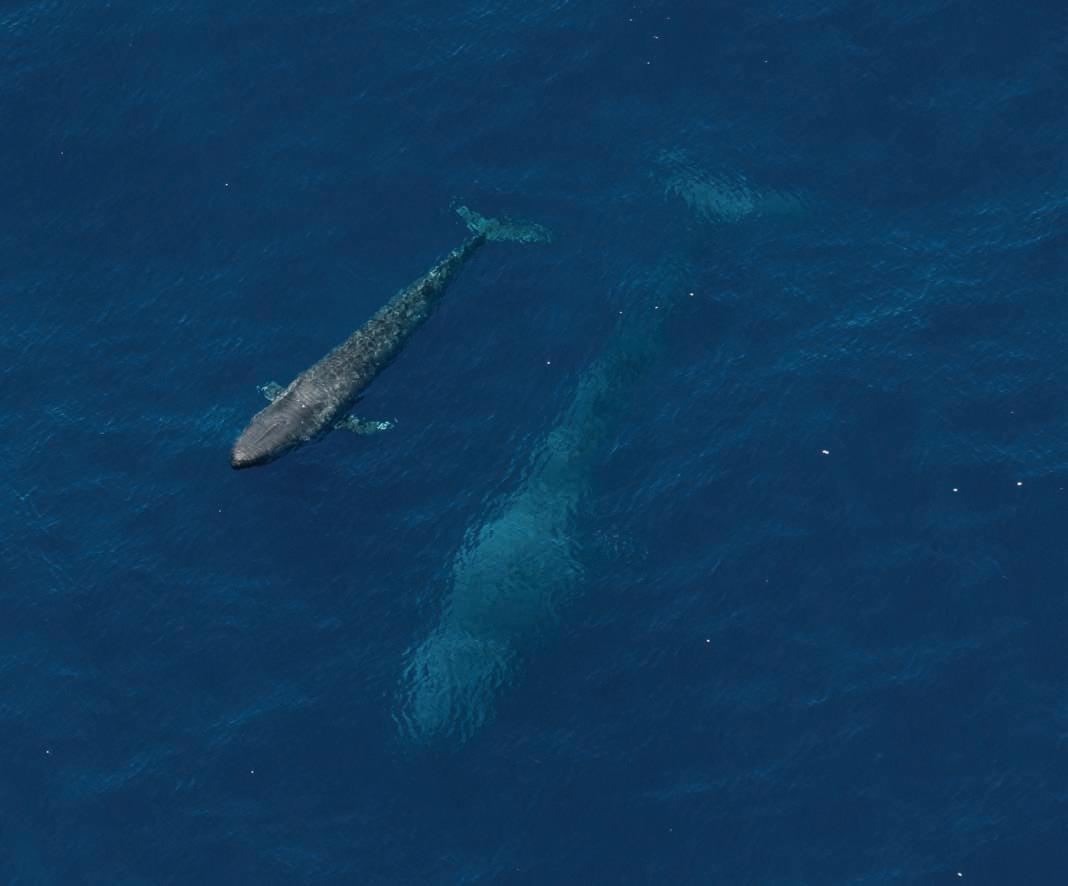
Australia’s oceans are among the most biodiverse on Earth. Our laws rightly require oil and gas companies to fully decommission their infrastructure once operations end, and for good reason. Leaving rusting industrial equipment to rot at sea poses serious and long-lasting environmental threats. These sites are laced with plastics, heavy metals, hydrocarbon residues, and radioactive material, all of which can leak into the ocean as structures degrade. The longer cleanup is delayed, the greater the risk to marine ecosystems, including fragile habitats like Ningaloo and Scott Reef, and endangered species such as the pygmy blue whale, whose migration routes overlap with major oil and gas fields.
“It’s the legal and moral duty of fossil fuel companies to clean up after themselves. Not governments. Not taxpayers.”
Despite these obligations, some companies have tried to walk away. Woodside, for example, left its Nganhurra Riser Turret Mooring to rot off the WA coast for more than five years9, only acting after public pressure and regulatory intervention. Others are pushing to abandon infrastructure or repurpose it under greenwashed claims of creating artificial reefs or risky carbon capture and storage (CCS) projects.

Offshore infrastructure isn’t benign once production ends, pipelines carry radioactive scale, wells leak hydrocarbons, steel corrodes, plastic breaks down and toxins affect the food chain. While some industry-backed research suggests minimal harm, independent long-term studies are scarce, and many of the dangers are still unknown. Delaying decommissioning only increases the environmental risks, health hazards, and eventual costs.
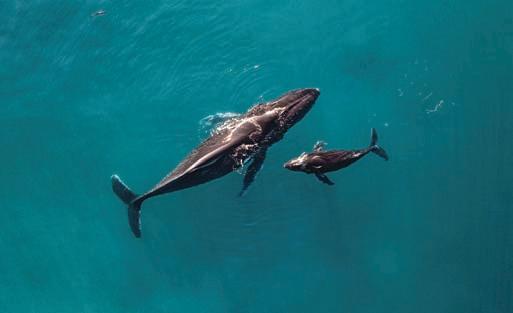
Australia faces an estimated $60 billion decommissioning liability, and without stronger regulation, much of this cost could fall to the public. The Northern Endeavour debacle showed when companies walk away, the Australian Government is left with the clean up task.
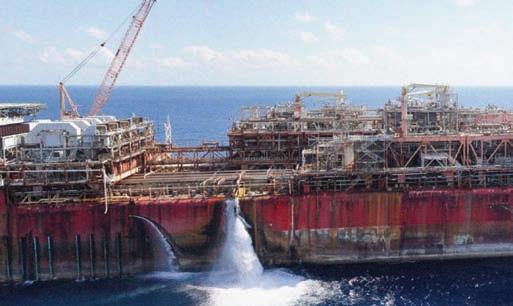

Northern Endeavour
Source: Department of Industry Science and Resources
The 2020 collapse of the operation exposed this risk. Woodside handed over the ageing production vessel to Northern Oil and Gas Australia (NOGA), a much smaller company. Within three years, NOGA had ceased operations under regulator orders and entered administration. The Commonwealth was left to fund the clean-up, prompting the introduction of the Offshore Petroleum Decommissioning Cost Recovery Levy to recoup costs from the oil and gas industry. In the 2023-24 financial year, the ATO reported an estimated $368 million in revenue from the levy, though the recovery process is still ongoing10
The Northern Endeavour fiasco revealed critical regulatory failures:
l NOPSEMA: the offshore safety and environment regulator, failed to ensure timely clean-up and risk mitigation
l NOPTA: responsible for titles and transfers, failed to ensure NOGA had the financial capacity to meet its obligations
While some reforms have followed, progress has been slow. Enforcement remains weak, and the legislative framework still allows asset transfers that can dump environmental and financial liabilities onto the public, particularly in WA’s state-controlled waters, where trailing liability for decommissioning has not been introduced, unlike Commonwealth waters. This leaves the state vulnerable to oil and gas companies abandoning their responsibilities.
Unions and experts have called for clean-up bonds to guarantee corporate accountability, expansion of the Offshore Petroleum Decommissioning Cost Recovery Levy for shared clean-up infrastructure, faster decommissioning timelines, and stronger enforcement powers for regulators. Until these reforms are enacted, the Northern Endeavour stands as a cautionary tale. A warning of what’s to come if Australia’s decommissioning framework doesn’t mature fast.
CSIRO highlights that reuse and repurposing of materials from decommissioning could supply valuable resources to Australian industries. Yet, due to market perceptions about the quality of recycled materials and limited local processing capacity, most materials are currently exported. Disposal remains a last resort. The Maritime Union of Australia (MUA) stresses that waste is a design flaw, calling for a circular economy that decouples growth from consumption of finite resources. This demands collaboration across government, industry, and community. Offshore decommissioning includes oil, gas, and renewable energy infrastructure. To unlock circularity, Australia must prioritise designing infrastructure for reuse, mandating full equipment removal, investing in recycling facilities, and reforming legislation to clarify recycling requirements and reduce regulatory barriers. Currently, Australian and WA law doesn’t require titleholders to recycle materials and bring infrastructure ashore, a major obstacle to building a circular decommissioning industry.

A broken legal patchwork, and a long history of corporate avoidance.
Decommissioning oil and gas infrastructure is expensive, complex, and politically fraught. For too long, the regulatory system has made it too easy for companies to delay or dodge responsibility. under the Offshore Petroleum and Greenhouse Gas Storage Act 2006, oil and gas producers are legally responsible for the full cost and removal of all offshore infrastructure. On paper the law is clear, but in practice it’s not even close.
As Professor Tina Soliman Hunter of Macquarie University has highlighted, Australia’s legal framework for dismantling and recycling offshore infrastructure is riddled with gaps11. There is no national standard for plugging wells, no mandatory inspection schedule, and poor coordination between Commonwealth, state, and territory laws. The result? A regulatory Swiss cheese, with loopholes large enough to sail a decommissioned rig through. In Western Australia, a significant amount of infrastructure falls under state control, where oversight from the national regulator (NOPSEMA) doesn’t apply. WA has some important rules, but blind spots remain. If we’re serious about protecting our oceans from offshore dumping, and about unlocking the economic potential of a local decommissioning industry, state law must catch up. That means:
l Trailing liabilities: WA must align with federal rules that keep companies on the hook for decommissioning, even if assets are sold or operators walk away. The bill must never fall on taxpayers.
l Financial assurances: Operators should be required to post bonds or guarantees before drilling begins, not after the damage is done. For existing infrastructure, a levy system should be introduced.
l Transparency: We need regular public audits, accessible data, and detailed decommissioning plans with clear monitoring obligations. Just like in the mining sector, we need hard figures on what clean-up will cost.
The Centre of Decommissioning Australia (CODA) was established in 2021 to help coordinate the sector. While there has been some important work conducted by CODA it has no civil society representation on its advisory board or within any of its structures. Without input from unions and environmental groups there will be inevitable bias and gaps in the recommendations coming from this body. Despite this, in just a few years, it has produced a raft of useful reports (some of which inform this one), and made one thing clear: Australia’s current decommissioning regime is undercooked. Most offshore infrastructure is still being sent overseas for dismantling, wasting the opportunity to build a strong local industry. CODA has identified several key actions to change this:
l Develop fit-for-purpose dismantling facilities in Australia, capable of handling large and complex offshore infrastructure, leveraging existing recycling and processing plants
l Cluster decommissioning projects to create a pipeline of work and support dedicated services, supply chains and workforce development
l Targeted government support to help local disposal compete with cheap offshore options
With most of the country’s offshore infrastructure sitting off its coast, WA is ground zero for this opportunity. Some progress has already been made in Dampier, Ashburton, and Onslow, but these are still small-scale operations. To become a real decommissioning hub, CODA recommends shortterm upgrades to Pilbara ports like Ashburton and Onslow to handle mid-sized infrastructure safely and efficiently, and long-term investment in a facility that can manage large topsides, jackets, and floating facilities. The Australian Marine Complex (AMC) in Henderson has been flagged as the most promising site, especially given its proximity to existing Defence and offshore wind activity. With the right planning and policy support, decommissioning could deliver skilled jobs, boost domestic recycling, and clean up our offshore legacy on home soil, instead of exporting the problem.
In late 2024, the federal government announced that Henderson would be developed as a base for servicing nuclear-powered submarines under the AUKUS security agreement12. A three-year feasibility study was launched, with headlines promising up to 10,000 high-skilled jobs13. Critics have questioned the credibility of these figures, but one thing is clear, Henderson’s role as the centrepiece of Australia’s decommissioning industry is in serious doubt. By blocking the development of decommissioning infrastructure to make way for submarines, the government has made a political choice that risks leaving us without the facilities needed to clean up and recycle our offshore oil and gas legacy.
In 2024, the Federal Government released Australia’s Offshore Resources Decommissioning Roadmap14 , aiming to provide clarity on the future of offshore clean up. Instead, it raised more questions than answers. The key finding? No single port in Australia is equipped to handle all types and sizes of decommissioned infrastructure. While the report claims existing ports can manage most tasks without major upgrades, the message is clear: Australia is nowhere near as ready as it should be or can be. There’s no mention of AUKUS, but the implications for Henderson are hard to ignore. The roadmap outlines a vision for a safe, cost-effective, and environmentally sound decommissioning industry, but it’s vague, and non-committal. Responsibility is deferred to the Offshore Decommissioning Directorate, a body within the Australian Government’s Department of Industry, Science and Resources. Still, the document highlights genuine opportunities, particularly for green steel and the creation of thousands of new jobs in regional areas. But many are sceptical. The Australian Centre for Corporate Responsibility (ACCR) flagged a major lack of transparency around decommissioning liabilities and readiness15. The Wilderness Society and other environmental NGOs, issued a 2024 Statement of Concern16, warning that Australia’s offshore oil and gas industry has operated without First Nations consent, and failed to clean up after itself. The roadmap might be a step forward, but without real accountability, it risks repeating the same mistakes.
While policy remains vague, the practical requirements of decommissioning are well understood. According to CSIRO (2024), a viable domestic decommissioning industry requires significant onshore infrastructure, covering everything from heavy lifting equipment to waste management and logistics. These can be grouped into three phases:
Onshore infrastructure requirements for decommissioning in Australia (csiro 2024)
PhASE ACTiviTiES
Dismantling l Decontamination and removal of hazardous waste
l Demolition and dismantling
l Sorting and separation of materials
iNFRASTRUCTURE REqUiREMENTS
l Cranes
l Hardstand/land for material storage (where permitted)
infrastructure transport
infrastructure management
l Transport and logistics
l Controlled waste management
l Reuse
l Recycling
l Disposal of wastes
l Reprocessing
l Manufacturing
l Freight network
l Controlled waste transport
l Reprocessing facilities
l Waste management facilities
l Ports (for export)
l Secondary markets
l Supply chain connection and management
l Material tracking and tracing
These are not future hypotheticals, they are physical, shovel-ready needs. Without coordinated investment in this infrastructure, Australia will continue to outsource the problem, sending offshore waste overseas and missing the opportunity to create a cleaner and economically productive approach to decommissioning.
Australia currently lacks ports that can support offshore decommissioning and wind construction without disrupting regular port operations. Both industries require deepwater access and large laydown areas for equipment, heavy steel structures, and cranes. Proximity to decommissioning sites is important to reduce transport costs, risks, and emissions. Ports also need strong transport links and capabilities to manage waste and contaminated materials. A thriving decommissioning industry could boost adjacent sectors like engineering, project management, vessel support, waste management, logistics, and transport, creating demand for diverse skills in dismantling, waste handling, transport, and recycling. Despite the opportunity, Australia’s current legal and logistical frameworks are not fit for purpose. Several key sites illustrate this challenge:
The Onslow Marine Support Base faced legal challenges over local approvals for dismantling Chevron’s offshore gas infrastructure but had its license confirmed in late 2024, allowing operations to continue.
The Australian Marine Complex in Henderson, WA, is the top choice for a decommissioning facility, with northwest WA as a possible alternative pending industry cooperation.
WA committed $55 million to activate Oakajee Industrial Area, but progress stalled due to disputes over infrastructure costs and responsibilities, frustrating locals.
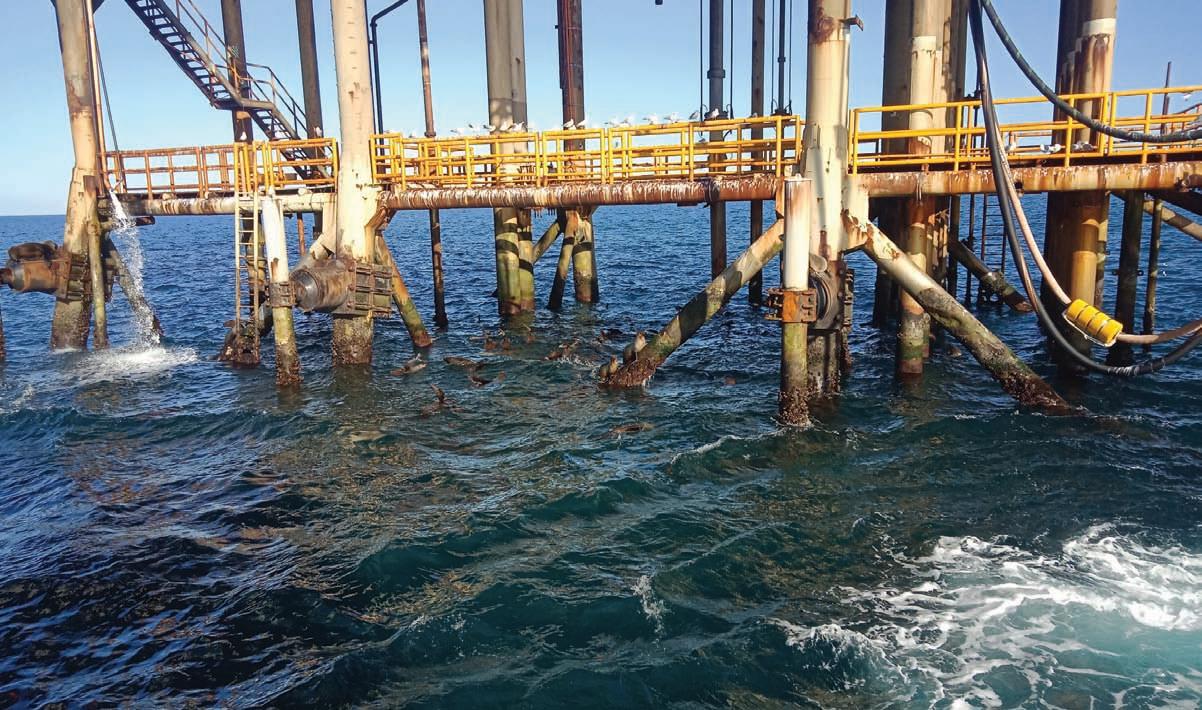
Decommissioning Western Australia’s oil and gas infrastructure locally is a critical opportunity to drive a just transition. It ensures a pipeline of secure, skilled jobs for fossil fuel workers and keeps public investment rooted in local communities. The potential environmental and economic rewards are significant, including recycling scrap and reducing emissions through use of green steel.
Recycling steel from decommissioned projects is one of the clearest paths to long-term economic value. Instead of shipping scrap offshore to be processed and profited from overseas, we can create local jobs in green steel production, keep profits in WA, and support the state’s transition to renewable manufacturing. But speed matters, identifying and securing an appropriate green scrap steel facility is urgent. WA must also be strategically linked to national green steel plans, including developments in Whyalla, to maximise opportunity and scale. When local steel is recycled using renewable energy, the economic and environmental multipliers are enormous.
Most job opportunities will arise during the construction of decommissioning infrastructure, with fewer ongoing roles in operations and maintenance. That makes early and active involvement of local communities and unions essential. From site selection and facility design to strong work health and safety protections, workforce planning and accommodation standards, affected workers and communities must be at the table from day one.
Without proper oversight, the legacy of WA’s offshore oil and gas sector risks becoming a toxic burden for future generations. Public transparency must be

non-negotiable when dumping infrastructure at sea is proposed. At minimum, these should be baseline requirements for any government approval:
l Environmental impact summaries
l Cleaning and safety protocols
l Monitoring plans and performance data
In the extremely rare circumstances where approval has previously been given for oil and gas infrastructure to be left in the marine environment, long-term environmental monitoring, responsibility for ongoing maintenance, and the obligation for eventual removal must remain with the industry.
Government regulation of the oil and gas sector’s environmental impacts has been, at best, patchy, so these commitments should be mandated, not left to voluntary frameworks. Further delays to building a decommissioning hub open the door to damaging default behaviours, like reef dumping disguised as reuse. What’s needed now is clear direction, financed by industry, not taxpayers, and delivered with union and community leadership. This is the moment to decide: repeat the mistakes of the past, or build a cleaner, fairer, job-rich future for WA.
Western Australia stands at a crossroads. We face a clear choice: repeat the costly mistakes of the past, or seize a transformative opportunity to be a green industry leader, secure local jobs, and protect our environment. Right now, Australia exports hundreds of thousands of tonnes of valuable scrap steel from our ports, missing out on billions in economic value and thousands of skilled jobs17. According to CSIRO, processing 10,000 tonnes of scrap steel domestically generates $4.8 million and supports 37 jobs18. With the right investment, WA could anchor a circular steel economy that fuels local manufacturing, reduces emissions, and powers our renewable energy transition.
Decommissioning WA’s offshore oil and gas infrastructure and recycling materials locally, would kickstart that shift and position Australia as a global green steel leader. International examples from Scotland, Denmark, Brunei and Norway show what’s possible when governments commit to best-practice recycling hubs that serve multiple energy sectors. But time is short and leadership is essential. To unlock this opportunity, the federal and WA state governments must work together to act now.

l Build a WA decommissioning hub
l Enforce and strengthen existing laws and regulations to ensure full and timely decommissioning
l Ensure decommissioning processes prioritise the safety of workers and the environment
l Invest in ports, recycling facilities, and a local workforce designed to support both decommissioning and emerging offshore wind and renewable energy industries
l Hold operators financially responsible and mandate full industry-funded clean-up
l Introduce strict environmental monitoring
l Work together with unions, First Nations, and communities to deliver a just, inclusive transition
l Link recycling to national green steel plans to position WA as a global clean energy leader.
Australia can’t wait. WA must lead the way. Build a large-scale decommissioning hub for our environment, for jobs, and for a green energy future.
WA must act now to protect our environment, create jobs, and lead the clean energy transition. Decommissioning is not optional, it’s essential. Done right, it can protect ecosystems, support a thriving circular economy, and deliver secure jobs for the future. With the right leadership, WA can transform an industrial challenge into a strategic asset and global model. Australia urgently needs a large-scale decommissioning hub and WA is the best placed to lead it.
ACCR (2023). Offshore Oil and Gas Decommissioning. Australian Centre for Corporate Responsibility.
Boxall, N. et al. (2024). Exploring Regional Opportunities for Onshore Resource Recovery from Offshore Oil and Gas Infrastructure. Prepared by CSIRO for the Department of Industry, Science and Resources (DISR), Australian Government.
Centre of Decommissioning Australia (CODA) (2023a). Decommissioning Innovation and Technology Roadmap. Perth: CODA.
Centre of Decommissioning Australia (CODA) (2023b). Global Review of Planning and Execution Learnings. Perth: CODA.
Centre of Decommissioning Australia (CODA) (2023c). Understanding the Opportunity for Local Disposal and Recycling Pathways. Perth: CODA.
CFMEU (2023). Submission to Roadmap to Establish an Australian Decommissioning Industry. Maritime Union of Australia and Construction Division.
Columbia Centre on Sustainable Investment (Lockman, M. & Brauch, M.) (2024). Decommissioning Oil and Gas Infrastructure in the Face of Climate Change and Energy Transition. August 2024.
DCCEEW (2023). Australian Exports of Waste and Recovered Materials 2021–22. Retrieved from: https:// www.dcceew.gov.au/sites/default/files/documents/ abs-waste-exports-annual-summary-2021-22.pdf
DISR (2023). Guideline: Offshore Petroleum Decommissioning. Department of Industry, Science and Resources, Australian Government, Canberra.
DISR (2025). Decommissioning the Northern Endeavour. Retrieved from: https://www.industry.gov. au/mining-oil-and-gas/oil-and-gas/offshore-oil-andgas/decommissioning-northern-endeavour
DISR (2025). Australia’s Offshore Resources Decommissioning Roadmap. Retrieved from: https:// www.industry.gov.au/publications/australias-offshoreresources-decommissioning-roadmap
DISR (2025). Offshore petroleum cost recovery levy. Retrieved from: https://www.industry.gov.au/ mining-oil-and-gas/oil-and-gas/offshore-oil-and-gas/ decommissioning-northern-endeavour/offshorepetroleum-cost-recovery-levy
Edwards, G. et al. (2025). Regional Energy Transitions in Australia. Routledge.
Godden, N.J. et al. (2025). Centring Country and Community in the Transition of Collie, WA. In Edwards et al. (2025).
Gordon, O. (2025). Collie’s Just Transition: A Blueprint for the World’s Eight Million Coal Workers? JUST Stories, 11 February 2025.
Greenpeace Australia (2024). Why Dumping Carbon Pollution in Our Oceans is a Dangerous Experiment. Retrieved from: https://www.greenpeace.org.au/ article/why-dumping-carbon-pollution-in-our-oceansis-a-dangerous-experiment/
Kurmelovs, R. (2024). In Australia, a New Way to Avoid Decommissioning Oil Fields: Call Them Carbon Capture Projects. Drilled, 2 October 2024.
McArthur, B. & Forrester, K. (2025). WA Government’s Energy Transition for Collie Still Unclear for Workers and Industry. ABC News, 1 March 2025.
Offshore Alliance (2021). Submission for Senate Economics Legislation Committee. AWU/MUA, November 2021.
Offshore Alliance (2022). Year in Review.
Offshore Energy (2025). Shell Taps Asian Duo for First Major Decom Project Offshore Brunei. Retrieved from: https://www.offshore-energy.biz/shell-taps-asian-duofor-first-major-decom-project-offshore-brunei/
Perpitch, N. (2024). New AUKUS Submarine and Servicing Precinct at Henderson to ‘Rival Resources Industry’ in WA. ABC News, 16 October 2024.
Soliman Hunter, T. (2023a). Best Practice for Dismantling, Recycling and Disposal of Offshore Petroleum Structures. Centre for Environmental Law Research & Innovation (CENRIT), Macquarie University.
Santos (2024). Ningaloo Vision Cessation of Production and Floating Asset Removal Environment Plan. Retrieved from: https://www.santos.com/wpcontent/uploads/2024/04/Santos-NV-CoPFAR-factsheet.pdf
Soliman Hunter, T. (2023b). Best Practice and Regulatory Reform for Plugging and Permanent Abandonment of Offshore Petroleum Wells in Australia. CENRIT, Macquarie University.
Uplift (2024). A New Deal for the North Sea: Planning the UK’s Energy Transition for the Public Good.
Walker, S. (2020). Review of the Circumstances that Led to the Administration of the NOGA Group of Companies. Commonwealth of Australia.
WA Defence Precinct (n.d.). Henderson Defence Precinct. Retrieved from: https://www.defence.gov. au/business-industry/industry-capability-programs/ continuous-naval-shipbuilding-and-sustainmententerprise/henderson-defence-precinct
Wilderness Society, Conservation Council of WA, Friends of the Earth, Australian Marine Conservation Society, Greenpeace, Environment Centre NT (2024).
The Failing Regulation of the Offshore Oil and Gas Industry Clean-Up in Australia: Statement of Concern. August 2024.
Willman Boodja et al. (2023). A Just Transition for Collie that Leaves No One Behind. Climate Justice Centre WA & ECU Centre for People, Place and Planet.
Woodside Energy (2024). Woodside Safely Removes Nganhurra Riser Turret Mooring. Retrieved from: https://www.woodside.com/docs/default-source/ media-releases/woodside-safely-removes-nganhurrariser-turret-mooring.pdf?sfvrsn=b29ea65c_8
1 Centre of Decommissioning Australia (CODA, 2023).
2 Decommissioning the Northern Endeavour (DISR, 2025).
3 The Columbia Centre on Sustainable Development (2024).
4 Centre of Decommissioning Australia (CODA, 2023).
5 Offshore Energy (2025).
6 Santos Ningaloo Vision Fact Sheet (2024).
7 DISR Decommissioning the Northern Endeavour (2025).
8 Australia’s offshore resources decommissioning roadmap (2025).
9 Woodside removes Nganhurra Riser Turret Mooring (2023).
10 DISR Offshore petroleum cost recovery levy (2025).
11 Best practice for dismantling, recycling, and disposal of offshore petroleum structures, CENRIT (2023).
12 Henderson Defence Precinct (N.D)
13 Perpitch (2024).
14 Australia’s Offshore Resources Decommissioning Roadmap
15 ACCR (2023).
16 Wilderness Society, Conservation Council of WA, Friends of the Earth, Australian Marine Conservation Society, Greenpeace, Environment Centre NT (2024).
17 DCCEEW (2023).
18 Boxall N et al (2024).








